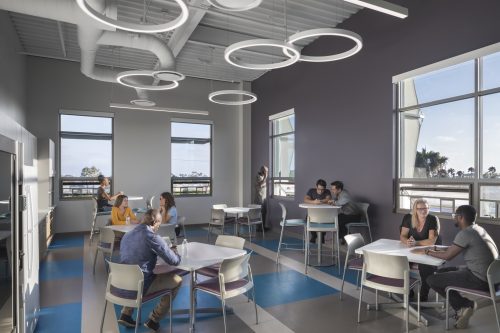 Creating a comfortable and productive workplace environment is essential for the success of any organization. When employees feel comfortable, supported, and motivated, they are more likely to be engaged and productive in their work. In this blog post, we will explore various strategies and practices that can help promote comfort and productivity in the workplace.
Creating a comfortable and productive workplace environment is essential for the success of any organization. When employees feel comfortable, supported, and motivated, they are more likely to be engaged and productive in their work. In this blog post, we will explore various strategies and practices that can help promote comfort and productivity in the workplace.
1. Ergonomic Workstations
Ergonomics focuses on designing workstations to maximize efficiency and minimize discomfort or physical strain. Providing employees with ergonomic furniture and equipment can significantly impact their comfort and well-being. Key considerations include:
- Ergonomic Chairs: Invest in adjustable chairs that provide proper support for the spine and promote good posture. Adjustable armrests and lumbar support can further enhance comfort.
- Height-Adjustable Desks: Offer employees the flexibility to switch between sitting and standing positions throughout the day. This promotes movement, reduces sedentary behavior, and improves overall circulation.
- Ergonomic Accessories: Provide ergonomic accessories such as keyboard trays, monitor stands, and wrist rests to reduce strain on the wrists, arms, and neck.
By prioritizing ergonomics, employers can minimize the risk of musculoskeletal issues and create a more comfortable and productive work environment.
2. Natural Lighting and Proper Lighting Design
Natural lighting has been shown to have a positive impact on mood, well-being, and productivity. Incorporating ample natural light into the workspace can help create a more pleasant and inviting atmosphere. Additionally, proper lighting design is crucial to avoid eye strain and fatigue. Consider the following:
- Maximize Natural Light: Arrange workstations near windows and use light-colored walls and surfaces to reflect natural light throughout the space.
- Balance with Artificial Lighting: Supplement natural light with appropriate artificial lighting, such as task lighting and ambient lighting, to ensure consistent illumination throughout the workspace.
- Adjustable Lighting: Provide employees with the ability to adjust their lighting levels according to their needs, allowing for individual preferences and reducing eye strain.
A well-lit workspace can enhance mood, boost energy levels, and ultimately improve productivity.
3. Comfortable Temperature and Air Quality
Temperature and air quality play a significant role in employee comfort and productivity. Extreme temperatures or poor air quality can lead to discomfort, fatigue, and health issues. To optimize these factors:
- Temperature Control: Maintain a comfortable temperature range between 68-72°F (20-22°C) throughout the workspace. Consider using programmable thermostats to regulate temperature efficiently.
- Air Circulation and Ventilation: Ensure proper air circulation through the use of fans, open windows, or HVAC systems. Regularly check and clean air filters to maintain good air quality.
By providing a comfortable environment with adequate temperature control and fresh air, employers can support employees’ well-being and enhance their focus and productivity.
4. Noise Reduction and Privacy
Excessive noise levels can be distracting and detrimental to productivity. Creating quiet spaces and implementing measures to reduce noise can significantly improve concentration and focus. Consider the following:
- Designated Quiet Areas: Establish designated quiet zones where employees can retreat for focused work or meetings without interruptions.
- Soundproofing: Use acoustic panels, carpets, or curtains to absorb sound and minimize echoes in noisy areas.
- Headphones and White Noise: Encourage employees to use noise-canceling headphones or provide white noise machines to help mask distracting sounds.
Additionally, providing employees with privacy options, such as partitions or private workstations, can also contribute to their comfort and productivity.
5. Construction Site Heaters
In construction environments, particularly during colder months, maintaining a comfortable and safe temperature is crucial. Construction site heaters can help ensure worker safety, protect materials and facilitate ongoing productivity. Some considerations include:
- Portable Heaters: Portable heaters provide flexibility, allowing you to direct heat where it’s needed most on the construction site. They are especially useful for heating small, enclosed spaces or for providing targeted heat in larger areas.
- Indirect-Fired Heaters: Indirect-fired heaters are a safe option for enclosed spaces, as they reduce the risk of carbon monoxide poisoning. They provide clean, dry heat and can efficiently heat large areas.
- Radiant Heaters: Radiant heaters provide direct, intense heat, making them ideal for outdoor construction sites. They work efficiently, even in windy conditions, by heating objects and people, rather than the air.
By utilizing construction site heaters, project managers can help ensure that work can continue, even in adverse weather conditions, leading to better project timelines and worker satisfaction.
In addition to the physical aspects of workplace design, it is also important to consider creating a positive and inclusive company culture, providing opportunities for growth and development, and promoting work-life balance. By implementing these strategies, employers can create a well-rounded and supportive work environment that prioritizes employee comfort and productivity. So, it is essential to continuously evaluate the workplace design and make necessary adjustments to ensure employees feel comfortable, motivated, and productive in their workspaces. Overall, a well-designed and comfortable workspace can greatly contribute to the success and overall satisfaction of employees within an organization.






